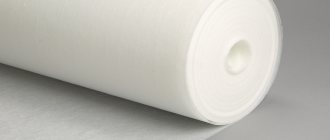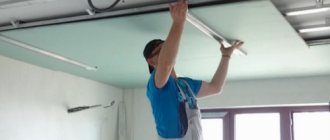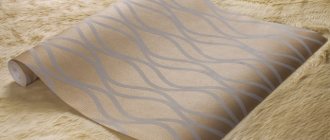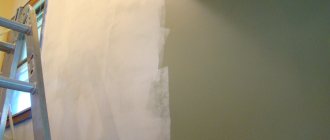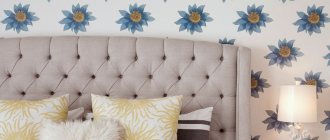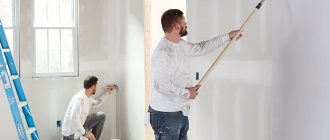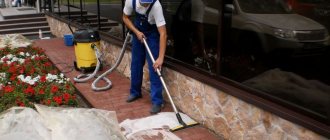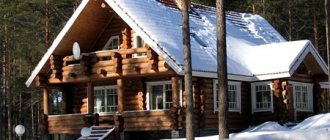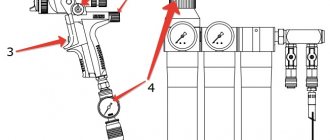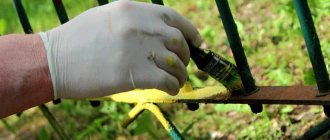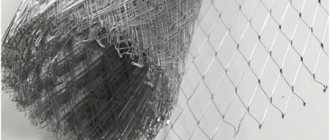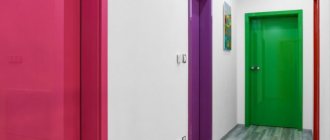Anyone who has ever dealt with renovation work knows how difficult it is to achieve a perfectly smooth surface, especially if it will be painted. Paint can radically change a room, but at the same time, if there are flaws on the surface, they will be visible to the naked eye.
This is why non-textured non-woven painting linen for painting is so popular - with its help the surface becomes perfectly smooth.
Non-woven fabric is very similar to fiberglass, but these are completely different materials
Painting non-woven fabric: the best choice for repairs
Painting interlining is the name of a group of non-woven interlining paper-like materials, which are based on sized and unglued, modified and unmodified cellulose fibers.
Painting interlining is a smooth non-woven product that is obtained by combining long-fiber cellulose and polyester fibers from textiles with a polymer acrylic fusion. Non-woven threads resemble fiberglass, but they are much thinner.
This fact is the basis for creating a smooth and thin coating of non-woven canvas.
Compound
In the production of non-woven material, artificial fibers are used. The main composition of the interlining fabric is viscose. Since the material is non-woven, it does not have a transverse or longitudinal thread, however, craftswomen prefer to cut the reinforcing fabric lengthwise, since it stretches slightly in the transverse direction. According to GOST, adhesive interlining fabrics are marked like other fabrics. That is, the manufacturer must indicate the composition and care rules.
The paper-like substance is considered semi-synthetic. That is, cellulose fibers are diluted with polyester. However, 100% viscose varieties are also available on sale. By chemically modifying the fibers, it is possible to increase strength and wear resistance. Rigid modifications are characterized by high dimensional stability, are well painted and retain color, and are resistant to dirt.
How to choose painting non-woven fabric
Once you are finally convinced of the need to purchase painting non-woven fabric for painting, you need to select it correctly to the parameters of your house or apartment. Non-woven fabric is an environmentally friendly material and is harmless to use. Therefore, make sure that the seller has all the necessary quality certificates and documents necessary for the sale to ensure the authenticity of the goods. Non-woven fabric must not contain PVC. Just like wallpaper, it allows steam to pass through. It shouldn't stretch. Pay attention to its texture: it should be perfectly smooth and soft, like a baby's skin. Particles of foreign origin should not appear on it. The edges should be smooth. The material itself has increased elasticity: make sure of this. Ask the seller more questions about quality. He must know what he is selling. Study the composition carefully: there should not be any chemical elements unknown to you, because you are purchasing an environmentally friendly product. Painting non-woven fabric consists of cellulose. Don’t think that you can’t choose the right material for painting. You have already made the right choice by agreeing to purchase it for renovations in your home.
What is non-woven wallpaper for painting?
Finishing surfaces with non-woven fabric is a good combination between ordinary boring wallpaper and banal wall painting. In the production of non-woven fabrics, cellulose processed using special technologies is used. Thus, in essence, non-woven paper is the same paper, but improved. It is more abrasion resistant, more fire resistant and practical.
Non-woven wallpaper is available in two types: those that do not require painting and those that can be painted. In terms of composition, wallpapers are actually non-woven and vinyl on a non-woven basis. Most often, non-woven wallpaper has a structural surface that imitates decorative plaster or ornament, and can also be smooth.
When choosing a picture, you need to pay attention to its size, because... a large pattern is not suitable for all rooms
Visually large ornaments make the wall even larger, and this will look awkward in small rooms. For small and dim rooms, it is advisable to use a small and chaotic pattern.
The palette is also important. Dark material is suitable for large and bright hallways and halls. Light palette - for bedrooms, children's rooms, kitchens.
What is the difference between painting non-woven fabric and fiberglass? Advantages and disadvantages.
Painting fiberglass (or web) is a fellow non-woven material that acts as a reinforcing wall covering. It is excellent at hiding, containing and preventing small and fine cracks in the wall. Painting fiberglass is an excellent choice of base for painting or wallpaper, or for other types of decorative application and strengthening of walls.
Painting fiberglass canvas is usually used in areas that do not require durability and wear resistance, for example, when renovating inexpensive offices. Therefore, for your home it is better to opt for painting non-woven fabric.
Painting non-woven fabric for painting is characterized by excellent hygienic properties, is an environmentally friendly material, safe to use, breathable, and fireproof. He is easy to work with. It can get wet many times without stretching, deforming, or shrinking.
Properties and characteristics of non-woven backing
Non-woven wallpaper is a non-woven, texture-free material with a base of long cellulose fibers. The top layer of the backing consists of polyester fibers. The function of the binding component is performed by acrylic polymer.
Thanks to the combination of all components, an unusually strong and reliable lining material is obtained, resistant to expansion and temperature influences.
Non-woven backing for wallpaper can replace the putty layer. Its uniqueness lies in its masking ability, which allows you to hide small irregularities or cracks.
It is worth noting that the material, like construction fiberglass web, reinforces microcracks. However, non-woven fabric is more elastic than gossamer, but this does not prevent it from maintaining its shape even with constant humidity.
Visually, the repair non-woven fabric resembles an ordinary Whatman paper. It is distinguished by a softer and more uniform structure.
Depending on the type of coating, construction interlining is distinguished:
- With non-woven covering;
- With fiberglass covering.
Non-woven backing for wallpaper costs from 900 to 10,000 rubles, has a width of 1.06 m, and the length can reach 25 and even 50 m.
This price range depends, firstly, on the length of the substrate, and, secondly, more expensive samples are covered with heavy-duty fiberglass, which increases the strength and density of the lining. Density indicators range from 160 g/m2.
Gluing non-woven fabric
An important feature of non-woven fabric is its adhesiveness. How to glue painting non-woven fabric? The glue should be applied not to the canvas itself, but to the surface with which it will be connected. Thus, there is interlining for the ceiling and for painting. Dry canvases are unpretentiously and absolutely precisely adjusted to each other. In this scenario, you save not only consumables, such as glue, but also finances, time and your own efforts. The material is quite convenient to work with: if the canvases are wrinkled while still in the roll, when pasting they will instantly smooth out so that no one will ever notice it.
The surface to which the canvas will be glued does not require any preparation. There is no need to remove drywall or old paint.
The glued interlining is durable under any use. However, this does not prevent you from easily saying goodbye to it during the next repair: you will not need any extra effort to remove it, and you won’t even have to wet the surface.
Painting non-woven fabric has a lot of positive qualities: it is light-resistant, durable, even in conditions of high humidity, fireproof, easy to use, does not require maintenance and looks decent in any room.
By choosing paintable non-woven fabric for renovation in your home, you are investing your money in a durable, environmentally friendly, practical and easy-to-use coating.
Source
How to glue non-woven wallpaper
Non-woven wallpaper is a universal wallpaper whose range of uses is enormous. They are pasted over in production areas and in residential premises. They perfectly hide the imperfections of walls, leveling their surface with minimal preparation. They can be glued to drywall, concrete, all types of plaster and other substrates. Before gluing non-woven wallpaper, you need to select an adhesive. It should be borne in mind that for most other types of wallpaper you can use universal glue, while this one requires a special one. It is applied directly to the wall surface with a roller, which makes the process easier.
Wallpaper must be glued without overlap and so that the joints are even. Using a roller, you need to remove air bubbles that form between the wall and the material. Gluing non-woven wallpaper differs from the technology of gluing paper and vinyl in that the glue is applied directly to the surface, and not to the wallpaper. This saves glue and reduces the amount of work.
Density of construction interlining for the ceiling
What density of construction non-woven fabric for the ceiling is best to glue so that the seams are not visible, but look like a single sheet?
Masters online: 99 Orders per week: 1,070 Offers per day: 741
The density of the wallpaper does not play much of a role, it all depends on the craftsmen who will glue it to you. As for puttying and stripping, it’s complete nonsense, but what if the wallpaper has a pattern? The wallpaper sticks well end to end.
Hello Julia. It all depends on what kind of non-woven fabric you want to use. If with a pattern for painting, then it is more porous, and if without a pattern, then 120-140g per m2 is preferable. Wallpaper should only be glued at the joint using glue for glass wallpaper for non-woven canvas and glue for non-woven wallpaper for porous wallpaper. Just before gluing the wallpaper, you need to thoroughly prime the ceiling and use a wallpaper spatula, a rubber roller, and a joint roller. I usually don’t prepare the ceiling for the entire length of the room (I don’t treat it with glue, because it has time to dry). It’s more convenient to work together. After painting 2-3 layers (for high-quality paint), the joint becomes completely invisible.
The density of the repair interlining does not in any way affect the visibility of the seams. Typically, from 85 to 110 g are used for the ceiling. per m2. The “invisibility” of seams depends on the accuracy of the wallpaper and the paint layer. Usually, after applying 2-3 layers of paint, the seams become completely invisible.
Source
What and how to paint
After gluing and complete drying, the wallpaper should be allowed to dry for several days and then proceed to painting. The appearance of the coating and the degree of wear resistance depend on which paint is chosen. The color palette is chosen only according to your taste preferences.
Before starting work, it is advisable to cover all things and objects in the room with polyethylene; this will simplify further cleaning of the room and removal of paint. The embossed surface of non-woven wallpaper is best painted with a hard brush. A roller and a spray bottle are also used. Smooth paintable wallpaper can be painted with any tool. Equipment you may also need is a paint tray, masking tape, spatula, gloves, and glasses.
Wallpaper with a uniform structure is painted only on the front side. It is practiced to paint the embossed material on the reverse side (immediately before gluing) or on both sides. When applying paint to the reverse side, the non-woven fabric is soaked through and through with the color, which protrudes on the front side.
Painting is carried out with water-based paints, acrylic paints without solvents and other harmful substances, as well as water-based paints. The advantage of water-based paints is the ability to choose tinting.
Also, to paint non-woven wallpaper, they use environmentally friendly and safe latex dispersion paint, which, after opening the can, must be used within several hours, otherwise it will dry out. This paint takes two to three days to dry on wallpaper. Its consumption is one liter per six square meters of area. Any palette is possible.
The painting will look original if the walls are painted in two layers of different shades.
So, paintable non-woven wallpaper is an excellent choice of material for renovation. They are easy to glue. The width of the roll allows you to quickly glue the canvases and quickly complete repairs in the room. This facing material allows you to experiment easily. Pasted walls can be repainted as many times as you want. The palette of choice of material colors and paint shades is simply stunning. This material hides the imperfections of the walls, which means there is no need to carry out additional labor-intensive work and spend extra money. Non-woven wallpaper is a choice in the best traditions of renovation.
Features and purpose of painting non-woven fabric
Painting non-woven fabric is distinguished by its smooth texture; the material is non-woven, and has many similar parameters to fiberglass material. It differs from fiberglass in thickness, it is thinner. This thickness is achieved by using polymer binders for the production of cellulose and textile fibers. The features of the material will be discussed in detail below.
Features of the work
To achieve a positive result, just purchasing good material is not enough; it is important to carry out all the work in accordance with the technology. In fact, everything is quite simple, but you should still remember the basic rules.
Preparatory stage
At this stage, you should first prepare all the necessary materials:
- Sufficient amount of non-woven covering with a small margin just in case.
- Glue for non-woven coverings, and remember that its consumption will be slightly higher than when working with wallpaper coverings.
The price of good glue, as in the photo, is quite high, but in no case is it worth saving on it
- If the surface to be finished has uneven surfaces, they should be repaired using putty; it is best to choose an acrylic composition.
- To level the material when gluing sheets with your own hands, it is better to use a special spatula.
Using this device it is very convenient to smooth the surface and expel air from under the material
Next, the surface should be prepared; within this stage, the following work is carried out:
- All debris and dust must be removed. After this, the wall or ceiling to be finished is carefully inspected for damage and flaws.
- If there are uneven surfaces, they must be repaired using putty. After it dries, it is necessary to sand it using a special block with replaceable sanding sheets.
Important!
If you are going to cover a wall finished with plasterboard, then you need to putty all the seams and fastening points.
In this case, it is recommended to use fiberglass mesh on the seams for additional protection against cracking.
Leveling the plasterboard surface is very simple
- The last type of work is priming the surface; any deep penetration composition is suitable for this.
Carrying out work
Even many experienced builders do not know what the technology is - painting non-woven fabric for painting did not exist a decade ago.
But the work is quite simple, they are somewhat reminiscent of wallpapering, but there are some features:
- First of all, the adhesive composition is prepared, this is done as recommended by the instructions on the package.
- Remember that the solution should not be applied to the material itself, but to the surface to which it will be glued. The easiest way to do this is with a special brush.
- It is better to carry out gluing with an assistant; first, the sheet is carefully applied to the surface, after which it is leveled using a spatula. The next sheet is located nearby, with special attention should be paid to the joints. Due to the fact that the material does not stretch, leveling the surface will not be difficult.
It is more difficult to glue interlining for painting on the ceiling than on the walls
- After finishing the work, the surface should be allowed to dry for at least a day, or better yet, wait a few days, after which you can apply paint. Additional puttying of the surface is not required; this distinguishes interlining from fiberglass.
After painting, the result is a perfectly smooth, pleasant-to-touch surface.
Almost any paint is suitable for painting. If there are metal elements on the surface, then they should also be painted; fire-retardant paints for metal Polistil are well suited; they, like non-woven fabric, do not support combustion and significantly increase the level of fire safety of the room.
If you need to achieve the effect of a steel surface, then Zinga electrically conductive paint is an excellent solution: the coating is shiny and very durable.
Purpose of painting non-woven fabric
Non-woven canvas is used as a reinforcing layer; the surface can be painted on top of it, or other decorative materials can be installed. It is similar to painter’s fiberglass, which in everyday life is called “cobweb”, and helps to contain cracks on the surface.
The application is associated with the desire to obtain a durable and highly resistant finish. Can be used in apartments, private houses, office buildings and other structures. Separately, they note the ease of its installation, after which it will be possible to update the finish on top of the canvas several times.
Overview of the main features of the material
To understand the features of working with non-woven coating for painting, you need to understand what this material is and what criteria high-quality samples must meet.
Manufacturing technology
Non-woven paper for painting consists of the following main components:
- The basis is long-fiber cellulose - a strong and reliable material.
- The top layer is made of the finest polyester fibers, thanks to which the surface is so smooth and durable.
- The binding component is a polymer acrylic composition, which gives the coating a lot of positive properties: lack of linear expansion, resistance to humidity and temperature changes, and a very long service life.
The surface of the coating resembles a drawing paper, but its structure is much smoother and softer. This coating is suitable for any room, it is completely environmentally friendly and does not emit any harmful substances during operation. That is why it can be used even in children's rooms, kitchens and bathrooms.
Criterias of choice
High performance properties of this type of finish can only be guaranteed when the material is made from high-quality raw materials and in compliance with numerous standards.
It is quite simple to distinguish a high-quality product from a low-quality one:
- The main indicator of quality is a perfectly smooth, silky structure. Any extraneous inclusions, irregularities and other defects indicate that the product was manufactured in violation of technology. It is from the surface that you should start choosing the optimal option.
- Leading manufacturers pay great attention to the ideal processing of edges, since these are the most problematic areas - flaws and tears significantly worsen the appearance of the surface.
- Another indicator of high quality is the elasticity of the material; if there are traces of bending on it, it is better to choose another sample that is more resistant to damage.
- The composition should not contain any foreign additives. To ensure this, you need to ask the seller to provide a quality certificate. If it is not available, it is better to refuse the purchase, since all products in this group must undergo certification.
- Another important factor is the lack of stretch in any direction. It is very simple to check this; you need to pull any section of the material in different directions; if it is even slightly stretched, its strength is quite low.
Unlike fiberglass, construction non-woven fabric for painting is almost opaque; any visible fibers are a sign of low quality
Advice!
It is best to choose products from well-known brands or read reviews about a particular material on construction forums on the Internet.
As a rule, the necessary information can be found fairly quickly.
Advantage of the material (declared by the manufacturers)
Non-woven fabric for painting is environmentally friendly and does not harm human health, so it can be used in any room. Security explained:
Another plus is the ability to cover surface imperfections, so this is a good option if you intend to paint the walls, glue wallpaper or install other finishing materials.
It helps to create unusual design ideas on the surface using plaster and putty mixtures. In addition, it has tensile strength. It is for this reason that it is similar to reinforcing products. Able to hide and also retain cracks, it is also noted that non-woven fabric:
Manufacturers claim that the material can provide a strong connection with many types of substrates:
It is impossible to say with certainty that such a solution will help to completely avoid problems with these surfaces, because other difficulties may arise with the old finish and poorly adhering base. In practice, it has been found that it is better to choose fiberglass for damaged walls; in the end it will cost less due to a better result.
To successfully use this building material, it is necessary to bring the base to the following parameters:
The canvases are distinguished by their surface stability, so applying a new coating is allowed several times. It will be easy to remove the outdated finishing material from it, but the non-woven canvas itself will not be damaged during this process.
The same can be done if the base was painted; you can repaint the surface many times. If you need to remove the canvas itself for painting, then dismantling it is not difficult. In addition, they note the properties: light resistance, sound insulation, lasts up to 25 years. The downside is that it attracts dust on the embossed surface, and the embossed texture is weak to mechanical damage.
Details
What adhesive composition to use
If you do not want to re-glue the ceilings several times, then you should immediately buy a special adhesive composition at a hardware store or on the market in order to get excellent gluing of non-woven wallpaper. If you use a starch custard composition, it will not hold such heavy fabrics. As a result, you will simply ruin the ceiling wallpaper, and you will never be able to glue it to the ceiling.
The special adhesive composition is very viscous and thick, so that the wallpaper for painting quickly begins to set and adheres perfectly to the ceiling surface. It must be applied directly to the ceiling surface, and then carefully apply the wallpaper for the ceiling and align it end-to-end with the previous strip. Usually the mixture is sold in dry form, and at home you will dilute it yourself with water before starting repair work for a short period of time and the adhesive composition will be ready.
We suggest taking a closer look at how to prepare it:
- You will definitely need a container with a wide neck. Most often, a simple bucket is used for this. Next, you need to read the instructions, how much water is needed for this amount of dry mixture and pour exactly this amount into the bucket.
- Take a large spoon and make a swirl in a bucket containing water, stirring the water. Next, carefully pour the mixture into it. It should be mixed evenly with water, there should be no lumps, otherwise lumps will appear when the wallpapering of the ceiling is finished.
- After ¼ hour, take the solution and stir it thoroughly, and that’s it, the composition is ready!
Previously, it was generally accepted that ceilings must be whitewashed and nothing else, since the walls will breathe well and the microclimate of the room will be the most favorable. At the moment, there are many materials on the market, as well as non-woven wallpaper on a rigid and strong base. If you use them to correctly decorate the ceiling, then if you wish, you will not have to think about major repairs for several years.
Tools and materials
Such tools are ideal for your work and you won’t need the rest. Before gluing, you need to go to a construction supermarket and you will find everything you need there.
How to choose painting non-woven fabric
If the choice is made in favor of this material, then you should pay attention to the selection of high-quality rolls. As mentioned earlier, painting non-woven fabric is environmentally friendly, so it is worth asking the store for certificates of quality and compliance.
You should check its texture, it feels perfectly smooth to the touch, without any flaws, the edges are also smooth. It should not be possible to stretch it, the texture is elastic. They check the composition, there should be no chemical elements present, and there should not be any other unclear designations. The consultant must professionally answer questions about the material, otherwise you should not trust him.
Advantages and disadvantages
Non-woven fabrics are very easy to apply and care for. They can be wiped with a damp cloth or cleaned with a vacuum cleaner. They are fire resistant and therefore safe. They are hypoallergenic because... the top layer does not absorb dust. The wallpaper is resistant to fading and fading, which means that the rich, bright color will delight its owners for a long time.
They can be glued to uneven surfaces. The structured surface will hide small irregularities and cracks well. Another advantage is the relatively low cost of the material.
Non-woven wallpaper for painting is very durable, and therefore they are easy to glue, they do not tear or crumple. Due to the fact that the glue is applied to the wall, there is no need to look for additional space for rolling out wallpaper on the floor and wiping the glue. Vinyl sheets are attached, for example, to the wall five minutes after applying the adhesive.
The ability to update the interior by painting the wallpaper a new color without any special material or physical costs is also a definite plus in favor of this material. In addition, the appearance of the room can be changed as often as you want. You can repaint them as many times as possible until the top layer is erased. The color palette for repainting can be any. In addition, if you need to remove the covering, you can peel off only the top layers (vinyl), leaving a layer of non-woven fabric on the wall. In the future, you can easily stick new material on it or cover it with paint.
It is worth considering that dust may accumulate on wallpaper with a textured volume, but it can also be cleaned. The top layer of the coating is subject to mechanical damage, so you need to be careful if small children and animals live in the house. You should not buy very cheap material. It is better to choose a white canvas or a plain one. Then it is easier to decorate, and color distortion can be avoided, and the color palette will appear in the tone in which it was originally intended.
Features and advantages of non-woven canvas gluing technology
The process of installing non-woven fabric for painting is easy; you start by applying wallpaper glue to the base itself, then sheets of reinforcing material cut to the size of the surface are applied to the adhesive layer. On the surface, smoothing and distribution of the product occurs quickly and without problems. Therefore, a beginner can easily carry out the entire process without turning to a professional for services.
This technology for installing non-woven fabric helps reduce the consumption of adhesive solution. But first, the surface should be properly prepared so that it is free from flaws and smooth. The mixture is selected based on the condition of the surface.
The adhesive solution is prepared thick, the wall is carefully coated with it, the interlining itself should be mounted using a plumb line so as not to be mistaken in its evenness. The strips are glued end to end and pressed to secure them well.
If the strips are too long, then carefully cut the excess part with a sharp knife. When the drying period specified by the material manufacturer has passed for the adhesive solution, they proceed to further finishing work.
Painting the walls
The most painstaking way is to paint the walls without using paintable non-woven fabric/paintable wallpaper/fiberglass. The walls are rendered “in glass” - into a perfectly flat and smooth surface without scratches. This is achieved by repeatedly alternating layers of finishing putty (shitrok is the most popular now, which is where “shitrot” comes from) and sandpaper.
But this method is not particularly recommended for apartments in new buildings, because... the house is still shrinking and cracks may appear. Therefore, in such situations, they use a base for paint, which can “hold” small cracks, hide scratches from sandpaper and hairline cracks, and there is no need to carefully paint the walls under it. Let's talk about this method.
1. Painting non-woven fabric Sold in large rolls one meter wide and about 25 long, smooth without texture. It comes in different densities, the smaller the thinner and lighter it is. The higher the density, the heavier it is (more difficult to stick), but the stronger it is. The fabrics are glued end-to-end using non-woven glue. After gluing it should be given enough time to dry before painting. Glue them end-to-end, it’s better to let them separate a little than to end up with a “croaker”; you can always fill the seam with putty. Then the steps: 1.1 in one layer, paint only the seams. 1.2 sew the seams over the paint, without getting into unpainted areas. We remove excess putty with a spatula, running along the seam without strong pressure. 1.3 we sand, removing the extra “bump” and smoothing. if necessary, repeat steps 1.2-1.3 again if after sanding you could feel the seam with your finger. 1.4 paint the walls two layers. And now for him all this rigmarole? So that not a single seam is visible at the finish and the walls look like “just painted walls” and not non-woven fabric. Paint is needed so that when sanding the interlining itself is not damaged and its texture is preserved, paint makes it stronger. But this is a method either for perfectionists (yes, yes, that’s exactly what I did) or for those who messed up when gluing non-woven fabric (and it’s easier to mess up with a dense one))) If there is no such desire and you want something simpler and faster, then after gluing and Once dry, you can prime and paint.
2. Fiberglass (“spider web”) It’s a rather unpleasant thing for your hands, so you don’t need to work with it unless you’re wearing gloves, otherwise you’ll end up with a lot of scratches later))) The thin one is glued end-to-end, after drying it’s scratched + sanded two circles and then primed- puts on makeup.
3. Paintable wallpaper. There are different textures and patterns. In general, they are no different from ordinary non-woven wallpaper, except that they can be painted in any color and subsequently repainted. Glue, prime and paint in 2 layers.
Tricks: 1. For the first option, a good primer can also help. For example, BM has an acrylic primer “fresh start”. Slightly whitish and thick, can be tinted. Thanks to its texture, it fills scratches and smoothes out unevenness a little. After this, paint consumption is noticeably reduced.
2. For the second option, you can use the same glue for non-woven fabric as a primer. Surely it will remain! Dilute it a little with water and that’s it - the primer is ready
What is the difference between painting non-woven fabric and fiberglass?
To understand exactly which of the similar materials is better to choose – fiberglass or non-woven fabric, you should study their differences and features of use. The first type of reinforcing product does an excellent job of covering surface imperfections, containing and preventing the appearance of cracks. Suitable for use as a base for painting surfaces or gluing wallpaper. It will give strength to the wall or ceiling on which it will be glued.
It is most often used in buildings where durability and wear resistance are not required, such as low-cost office spaces. The non-woven look is a more effective option for finishing walls in a residential building or apartment, where the owners often want to make repairs without spending a lot of time on it.
Also, painting non-woven fabric is distinguished by its environmental composition, good vapor permeability, and fire safety. It is easier to carry out repair work with it; its resistance to moisture allows you not to be afraid of changes in structure and deformation over time.
Material selection
Non-woven wallpaper is a material that requires special attention when choosing. After all, not only aesthetics, but also practicality and durability of the finish depend on its quality.
Several criteria can be identified, based on which it is advisable to choose a high-quality construction non-woven fabric:
Structure. Non-woven lining is known for its uniform and silky texture. Therefore, if any foreign inclusions, inhomogeneities or other visually noticeable defects are detected, it is better to refuse the purchase. Flaws on the surface indicate unfair production or a violation of the technological process. Edges of the substrate
Good manufacturers pay great attention to the quality of edge processing. They must be perfectly smooth and solid
Tears or loose edges can not only deteriorate the appearance of the decorative surface, but also lead to a decrease in the overall service life.
Elasticity. Painting non-woven fabric should be resilient, despite its elasticity. The ability of the lining to withstand mechanical stress and return to its shape depends on its elasticity. When purchasing, you should pay attention to the presence of dents or bends on the roll. The highest grade substrate is not characterized by their presence. Strength. You can determine it by pulling a section of non-woven fabric in different directions. If it is even slightly stretched, this indicates insufficient strength. High-quality material is not subject to stretching. Compound. The non-woven base is subject to mandatory certification. Therefore, when purchasing a lining, you must ask the seller for quality certificates for the products. There should not be any chemical impurities in the composition.
To be sure of quality, it is better to give preference to products from already established brands.
Non-woven backing for wallpaper is a unique durable material that can restore its shape. Resistance to various influences makes it one of the most practical types of substrates - strong, reliable and durable.
Instructions for gluing painting non-woven fabric
The main advantage of canvas for painting or wallpaper is the ease of installation; it is simply glued to the wall. For this purpose, it uses wallpaper glue; there are no special requirements for wallpaper glue, the material is not heavy. The ceiling or wall should be coated; the ability to work with the ceiling is also a plus of the product.
Cutting strips is easy, the material can be measured very accurately, and on the surface it quickly straightens, this is due to its elasticity property, which you need to be sure of when purchasing in order to choose a quality product.
It is recommended to use it on a leveled surface; you do not need to remove the well-adhering old coating. The glued interlining will serve for many years; you can glue it to it or paint the surface with new wallpaper/paint if you want to update the interior. If the decision is made to carry out a major overhaul, it will be easy to remove the stripes; removal takes place in a dry state.
Further painting can be carried out using the standard method using a roller or spray gun. But, if dark colors are applied, then it is better to repaint them no more than three times.
Painting non-woven fabric is a high-quality product that will help make the wall more durable, and will reduce time and expenses for updating surface finishes, without harming human health. You can glue it to the wall or ceiling with your own hands, without resorting to the services of specialists, which will significantly save the family budget. But in order to get all the declared characteristics, you should choose the brand with special attention.
Features of non-woven wallpaper for painting
An excellent option is non-woven wallpaper for painting. Paintable wallpaper can withstand repeated application of paint, without changing its strength and texture. In industry, wallpaper is produced in the form of rolls, the width of which ranges from thirty to one hundred and fifty centimeters. In retail they are sold in the form of rolls, individual strips, sheets, and shaped templates. Wallpaper is painted using acrylic and dispersion paints. When choosing colors and patterns, you need to take into account the basic interior design. For example, a beige shade will bring harmony and warmth to the interior, while turquoise and a light green shade will add peace. When choosing non-woven wallpaper for painting, you need to remember to carry out the correct work in the future:
- paint choice
- work on painting wallpaper is carried out only after it has completely dried on the wall
- The best result is achieved when staining two or three times.
When leaving restoration wallpaper unpainted, it should be taken into account that the walls must match the tone of the wallpaper and be as even as possible, since the non-woven base is illuminated in daylight.
